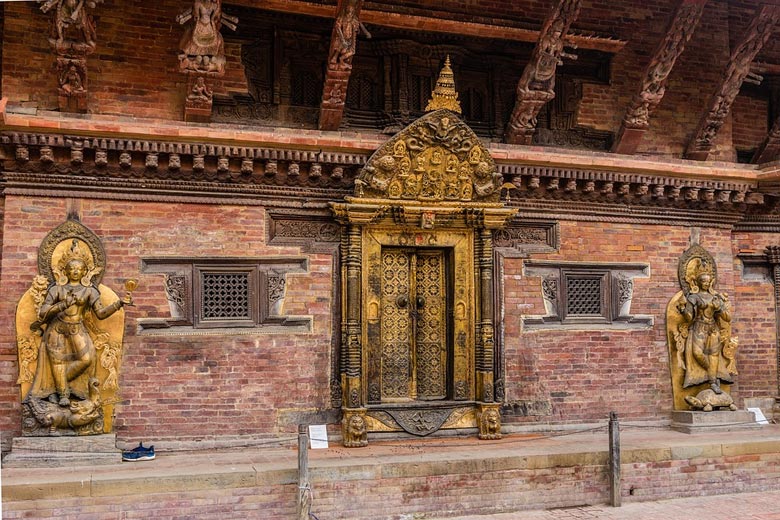Bhaktapur , Approximately 10 Kilometers from Kathmandu is an integral part of Nepal holiday packages ,Tourists visiting Kathmandu must keep a day free to visit Bhaktapur ,the Top 10 Sightseeing in Bhaktapur , include :
#1. Bhairabanath Temple
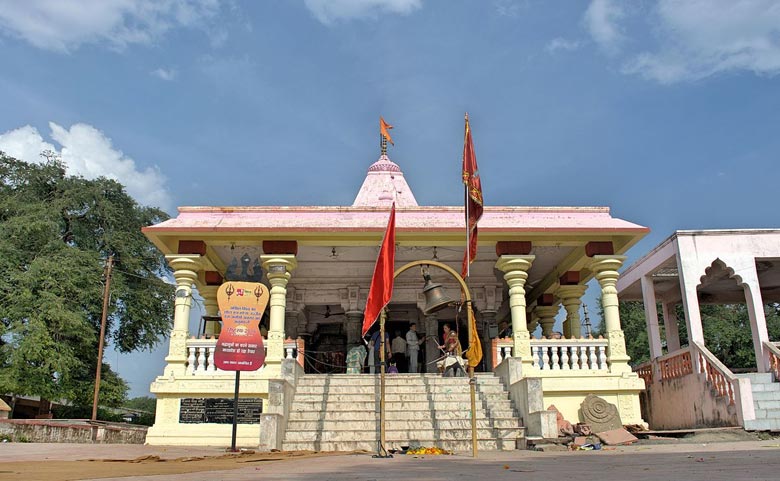
Bhairabanath Temple Bhaktapur
Dedicated to Bhairav, this temple is a place of worship for Hindus and Buddhists. Constructed in stages from 1617 to 1718, and renovated after the 1934 earthquake, it is often the scene of sacrifices. Do not be surprised if you see animal heads and inflated intestines hanging from its beams.
#2. Bhaktapur Art Gallery
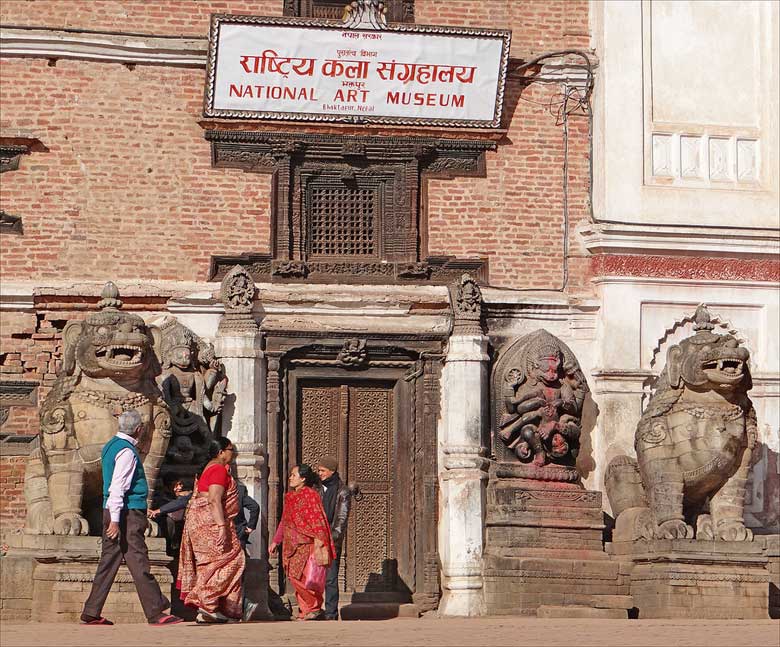
Bhaktapur Art Gallery
Known as the Durbar Hall, or Palace of 55 Windows, the former Royal Palace that now houses the gallery was constructed in 1427 and renovated in the 17th century. Each balcony has carved windows that are increasingly more ornate at each ascending level. The wood carvings are considered some of the best in Nepal. The museum has a lovely collection of scroll paintings, as well as bronze, brass, stone, and wooden images spanning from the 13th to the 19th centuries. Most pieces depict Hindu and Buddhist tantric deities.
#3. Brass and Bronze Museum
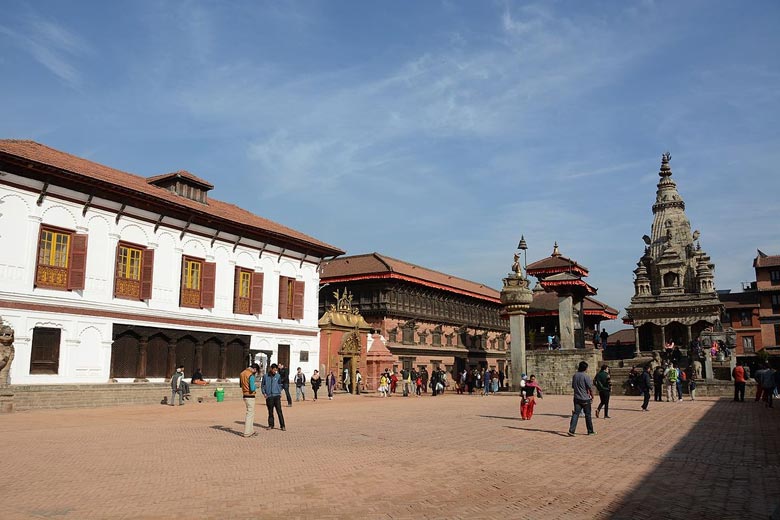
Brass and Bronze Museum
Housed in another exquisitely carved building, this museum is a good place to see household brass and bronze items. However, if you are looking to see a large collection of religious statues, you won’t find them here.
#4. Dattaytraya Temple
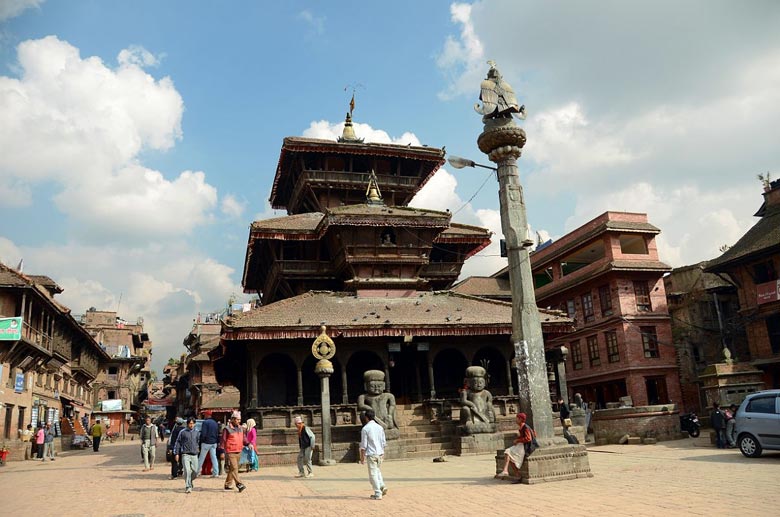
Dattaytraya Temple
A legend asserts that the wood for this three-story temple came from the trunk of a single tree. Built in the first half of the 15th century, it is one of the oldest temples in the valley. As is typical of Nepal, it is important to Hindus and Buddhists alike: Datta-traya is an incarnation of Vishnu, according to Vaishnavas. However Shaivas say he is Shiva’s guru, and Buddhists call him a bodhisattva.
#5. Golden Gate
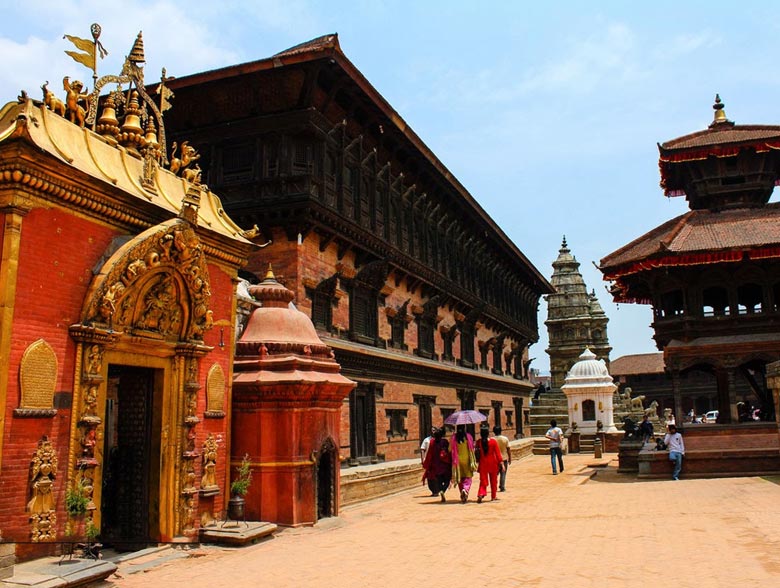
Golden Gate Bhaktapur
The gate was constructed in 1745 by King Ranjit Malta who put the image of wrestlers along the bottom edge. Facing the gate is a bronze statue of King Bhupatindra Malla, seated, with his hand, together in a gesture of devotion to the goddess Taleju whose image is on the center of the gate. Durbar Square, Bhaktapur.
#6. Nyatapola
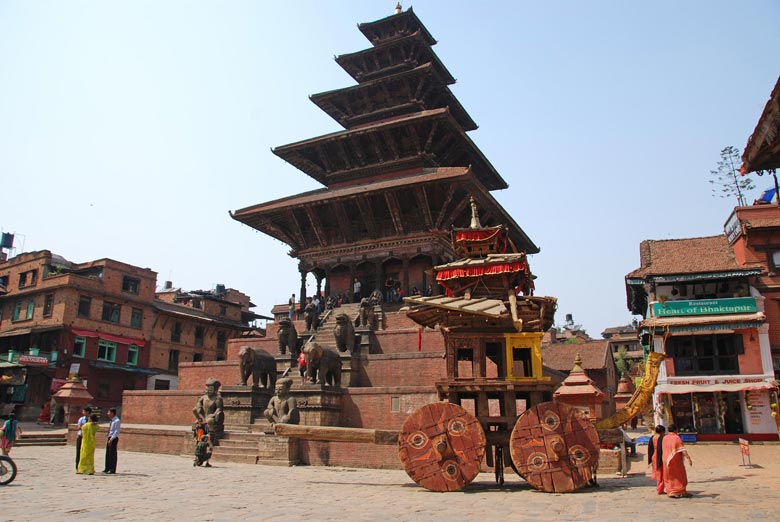
Nyatapola Bhaktapur Nepal
Built during the reign of King Bhupatindra Malla in 1702, this is one of the finest examples of Nepal’s pagoda-style temples and is the tallest temple in the Kathmandu Valley. Five platforms lead up to the temple with its five-tier roof. On each platform stands a set of guardians, with each pair supposedly 10 times stronger than the pair below. At the bottom is a pair of wrestlers, Jaya and Pata, who were 10 times stronger than ordinary men. The deity enshrined inside, the tantric goddess Siddhi Lakshmi, is the strongest of all.
Since the temple was never officially inaugurated, its doors have never opened to the public, although priests are allowed inside. Some days, a flag flies from the golden tip; one wonders how they got it up there.
#7. Pashupatinath Temple
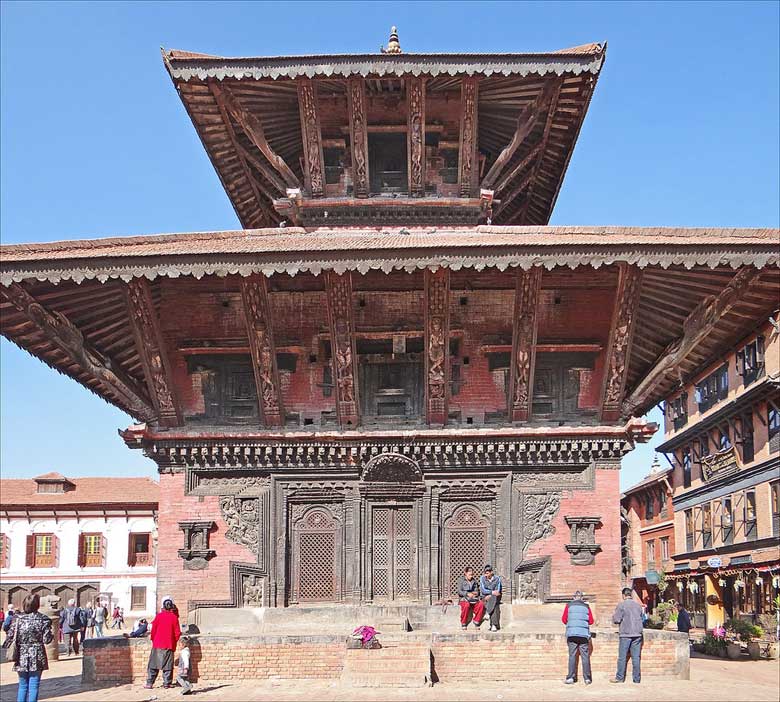
pashupatinath temple bhaktapur nepal
The struts on this two-roofed pagoda depict forms of Shiva and characters from the sacred text, the Ramayana. Inside, look for the large, black, four-sided stone linga of Shiva, which is a replica of the sacred linga of Pahupatinath. Some historians claim the temple was constructed in 1492, others say in 1682. It is a replica of the Pashupatinath Temple in the Kathmandu Valley.
#8. Pujari Math
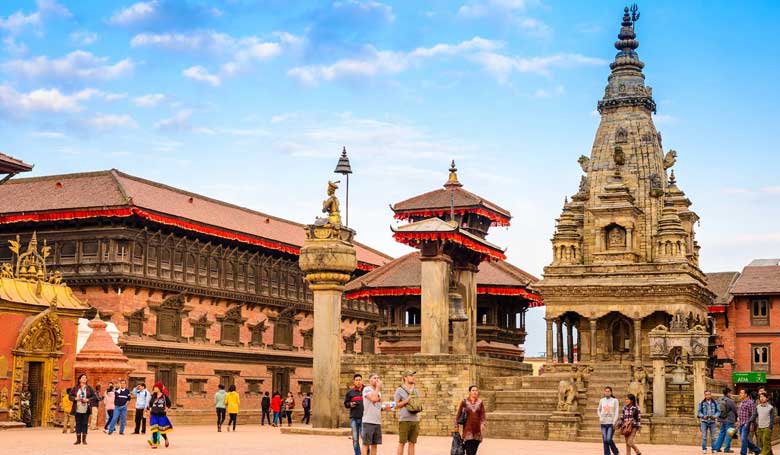
Pujari Math Bhaktapur
This 15th-century building, constructed by the Malla King Yaksha Malla, has intricate woodwork that was restored with German assistance in the early 1970s. Appropriately enough, it is now home to the National Woodworking Museum, where you can see a small collection of wooden statues and struts from old temples. You can also get an up-close look at the intricate carvings of the Peacock Window.
#9. Taleju Chowk
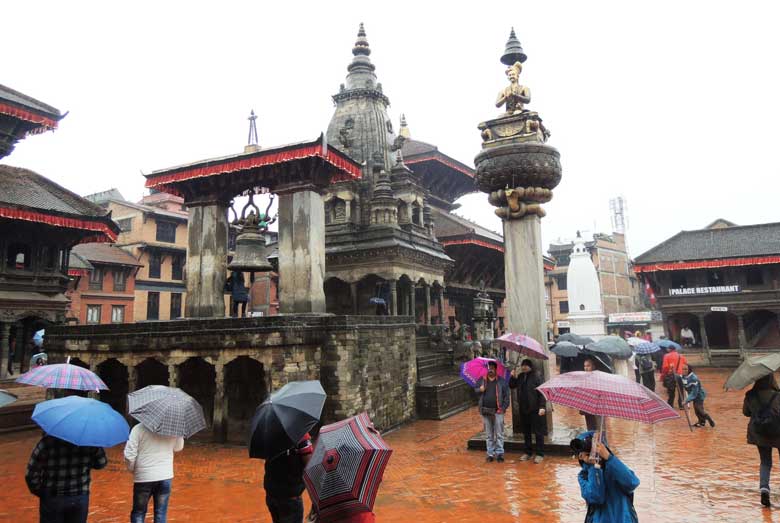
Taleju Chowk Bhaktapur
Non-Hindus are not allowed to enter this sacrosanct court-yard, but you can peek in to see the Taleju Temple, with its rich carvings, and the smaller Kumari Chowk, in the far right-hand corner. They are said to be the most beautiful structures in Bhaktapur. During Das-sain Festivities, the army sacrifices 108 water buffalo—each one killed with one strike of the knife. The blood is given to the goddess; the meat is distributed to government employees.
#10. Ugrachandi and Bhairav statues
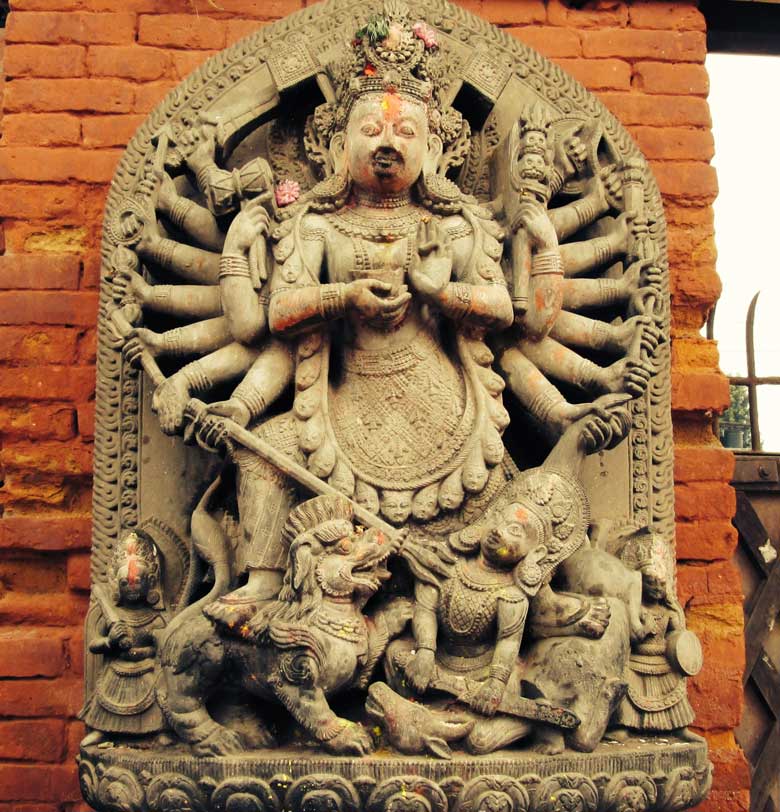
Ugrachandi and Bhairav statues
Surrounded by female attendants, the goddess Ugrachandi is shown killing the buffalo-headed demon, Mahishasur. Legend claims that King Bhupatindra Malla ordered the construction of these statues and was so delighted by the craftsman-ship that he did not want any rivals: so he had the sculptor’s hands chopped off. Note the garlands of human heads that both these deities wear.
For more Information on Nepal, Bhutan and other holiday destinations contact Swan Tours, One of the leading travel agents in India since 1995.
